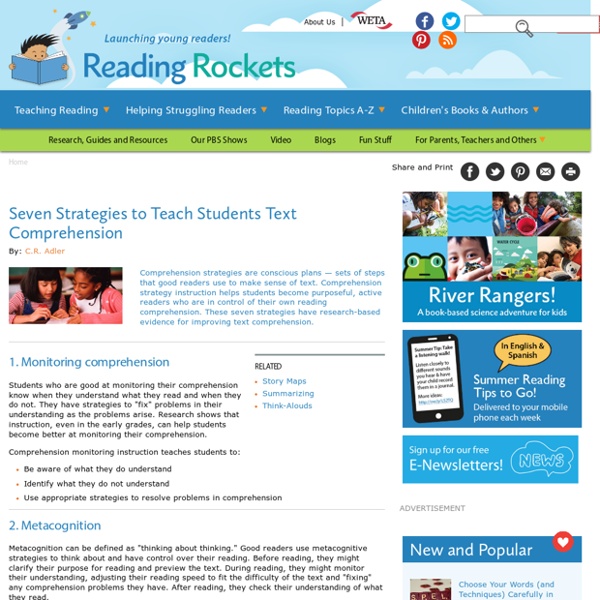Silvia Tolisano- Langwitches Blog
Reflection is an important component of the learning process. It can NOT be seen as an add-on, something to be cut if time is running short. We have all heard John Dewey’s quote: “We don’t learn from experience, we learn from reflecting on the experience” Reflection also takes on an important role in documenting learning, blogging as pedagogy and formative assessment. Asking a teacher to simply “reflect” on a lesson taught or asking students to “reflect” on their learning, will often be met with blank stares.
Teaching Strategies for Reading: Professional Development Resource
Highlights SummerSummer is here! While most of your students will be on break from school for a few months, you can still engage their minds this summer. Try our summer reading suggestions, math and science worksheets, and cross-curricular resource packets to prepare kids for what the next school year will bring!
How to teach possessive adjectives and nouns!
As you progress with your beginner ESL students, we recommend introducing possessive adjectives and nouns at a relatively early stage. It is a natural progression once your student is comfortable with building basic sentences and has confidence with subject pronouns and object pronouns. Consider introducing the concept after your student becomes comfortable with basic Present Simple sentences.
The Lexile® Framework for Reading
There is no direct correspondence between a specific Lexile measure and a specific grade level. Within any classroom or grade, there will be a range of readers and a range of reading materials. For example, in a fifth-grade classroom there will be some readers who are ahead of the typical reader (about 250L above) and some readers who are behind the typical reader (about 250L below).
20 Ways To Help Your Child Learn Their Sight Words
Welcome to my second blog in the series “Literacy in the Primary Classroom”. In this blog I focus on how educators and parents can use games in their home and classroom to help children learn sight words successfully. When children begin Primary School they are usually given a list of sight words to learn each week. Sight words are the frequently used words that come up in beginner reading books. Children need to learn these words by sight as it is very difficult to use sound knowledge to work out these words.
Educators Need to See Themselves As….
I am working hard on my and Janet Hale’s upcoming book, Documenting Learning- Making Thinking Visible, Meaningful, Shareable, and Amplified with Corwin Press. (Estimated date of publication: Spring 2018). As I am articulate why learners (and specifically educators) should see themselves as documenters, my mind wrapped itself around the following: Educators need to see themselves as more than covering content, lecturers or deliverers of prescribed/established curriculum. We live in a time, where we learn, how we learn, when we learn and with whom we learn changes at an exponential rate.
Shared Writing Learning Strategy
In a Shared Writing activity, the students are actively engaged while you model the writing process. Using the board, chart paper, or a document viewer, write out the text in front of the students, with their input regarding events of the story or mechanics of writing. Using the Think Aloud strategy, demonstrate in-the-moment editing as you write. Reread the text to students from time to time to discuss if it is clear or if anything needs to be done. When the story is complete, read it to the class. Ask students to summarize what they learned about writing the draft.
Autism Spectrum Disorder (ASD)
Page Content ASD is a complex developmental disorder that affects how a person behaves, interacts with others, communicates, and learns. NICHD is one of many federal agencies and NIH Institutes working to understand ASD. NICHD supports and conducts research on what causes autism, how best to detect signs of autism, how best to treat autism and its symptoms, and other topics.
Literacy Lowdown- Word Study Activities
Maureen Hayes, PreK-6 Humanities Supervisor This Month's Focus: Meaningful Word Study Activities In my January/February Smore, I shared information for supporting word study and phonics development in your classroom.



